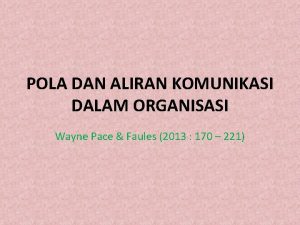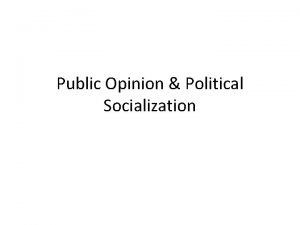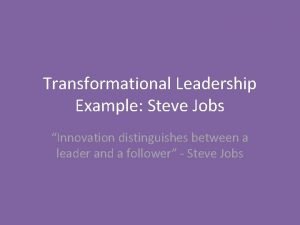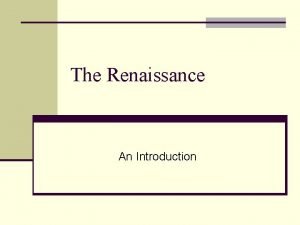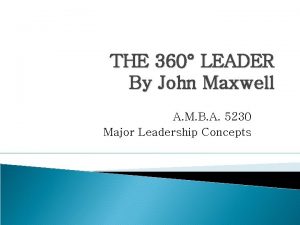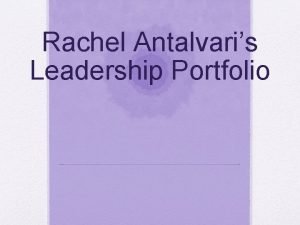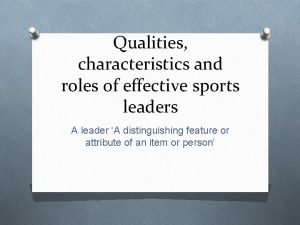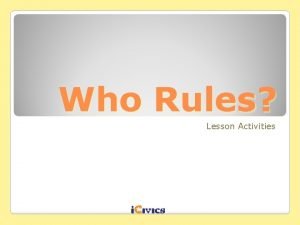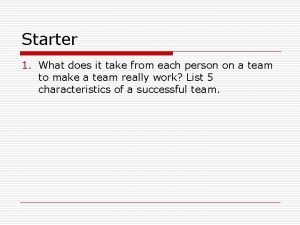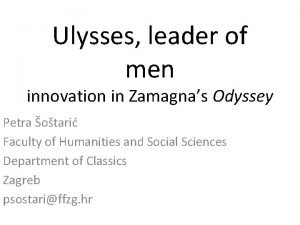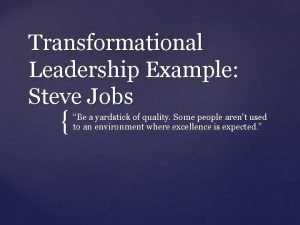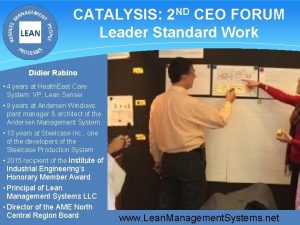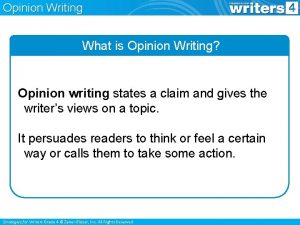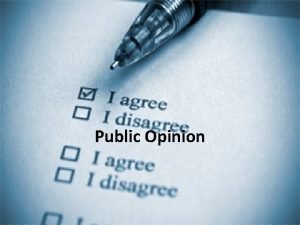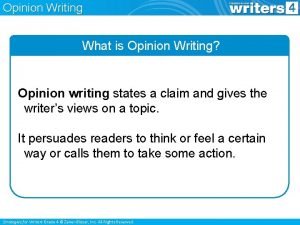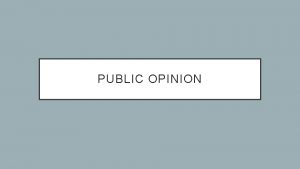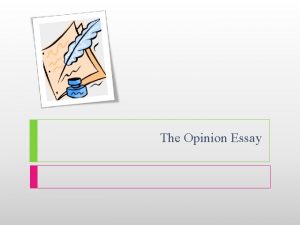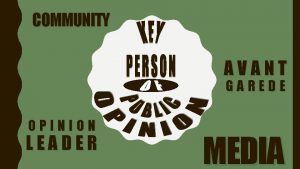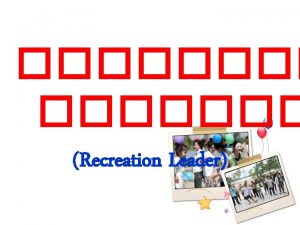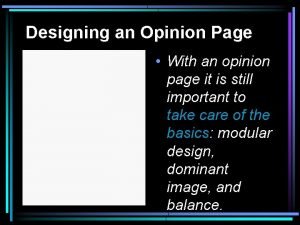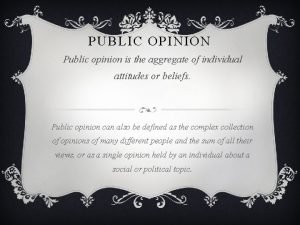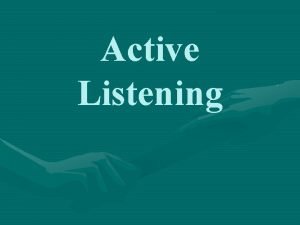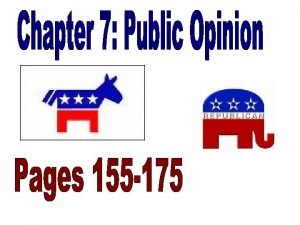11 1 Opinion Leader An Opinion Leader is

















- Slides: 17

11 -1 Opinion Leader An Opinion Leader is Someone Who is Opinion Leader Knowledgeable and Whose Advice is Taken Seriously By Others. An opinion leader is a well-known individual that has the ability to influence public opinion on the subject matter for which the opinion leader known. Opinion leaders are quite influential in getting people to change the attitudes and behaviors of community

11 -2 Opinion Leadership The process by which one person Opinion Leader informally influences the actions or attitudes of others who may be opinion seekers or opinion recipients

11 -3 Opinion leaders are ----Are Often Among the people who adopt first Have Similar social status, Values and Beliefs as opinion seekers Self Confident Opinion Leaders Are Socially Active in Their Community Technically Competent and Have Expert Power Have power to evaluate and Synthesize Latest information

11 -4 Extent of An Opinion Leader’s Influence • Very few people are Generalized Opinion Leaders, someone whose recommendations Leaders are sought for all types. • More likely, opinion leaders are either: – Monomorphic, or an expert in a limited field. Monomorphic – Polymorphic, or an expert in several fields. Polymorphic • Even opinion leaders who are Polymorphic, Polymorphic tend to concentrate on one broad domain.

11 -5 Key Characteristics of Opinion Leaders rs o t r the e w e o o P nc e lf u In Co In m no m va un ti ic ve at or s Technically Competent s r o at v o n n I d n Have ability to take risk a d an ket m r n e a D M rive D

11 -6 Diffusion of Innovations 2. 5% 16. 5% 34% 16%

11 -7 How we identify Opinion Leaders? • Socio-metric Method – – – Referral Behavior Network Analysis Referral Network Tie Strength Bridging Function

11 -8 Two step flow of communication • Comprises of two stages: First in which individuals _____(? ) who pay close attention to the mass media and its messages receive the information These individuals pass on their own interpretations in addition to the actual media content. Mass media play a key role in two step flow of communication in innovation diffusion process or diffusion of innovation theory

11 -9 Two step flow of communication • Also known as multi step flow model • According to this model majority of the people shape or form their opinions under the influence of opinion leaders • These opinion leaders in turn influenced by mass media • Ideas flow through Mass Media to Opinion Leaders and then to the general public (opinion followers)

11 -10 Two step flow of communication Model Mass Media Opinion Leaders Individuals having contact with Opinion Leaders

11 -11 Why Two step flow of communication? • Significance of two step flow of communication in innovation diffusion process • Improves/enhances the decision making process • Also influence the decision making • Key role in adoption process/enhances adoption procedure • Some social scientists also criticize this model due to inadequate flow of learning • In Diffusion of Innovations Face to Face communication is more important than Mass Media

11 -12 The Interaction Effect • The interaction between opinion leaders and opinion seekers depend upon the social system and availability of media • This interaction effect results into Conformity • Conformity is the change in believes or actions as a result of group interaction or group pressure (social or cultural)

11 -13 Personal Influence • People (as individual or in a group) exert influence on other members of society in decision process • They may be opinion leaders • Greater the knowledge greater will be degree of influence

11 -14 Personal Influence on Individuals Personal Influences Type of Influence Transmission High Degree of Influence Change in Behaviour Low Degree of Influence

11 -15 Type of Personal Influence • Normative: when individuals alter their behaviors or beliefs to meet the expectations of a particular group • Informational: when people have difficulty in assessing the characteristics of an innovation by their own observations or contact

11 -16 Personal Influence Personal influence in the form of opinion leadership is likely to occur when: • An individual has limited knowledge about an innovation • The person lacks the ability to evaluate the new thing or product or innovation • The members of society does not trust advertising and other sources of information • Low credibility of information sources • Strong social ties • The complexity of the innovation

11 -17 Barriers in flow of ideas A number of barriers involve during flow of information in a social system: • Social (compatibility of innovation with values) • Language and Cultural norms values (Muslims and Other Societies) • Traditional barriers • Heterogeneity among members • Rate of adoption (purchasing power) • Interest level of opinion leaders • Complexity of the innovation (usage barrier)
 Transactional leadership vs transformational leadership
Transactional leadership vs transformational leadership Polymorphic opinion leader
Polymorphic opinion leader Aliran komunikasi dalam organisasi
Aliran komunikasi dalam organisasi Private opinion becomes public opinion when
Private opinion becomes public opinion when Transformational leadership
Transformational leadership Nike leader mondial
Nike leader mondial What makes a good leader
What makes a good leader Lucille leader
Lucille leader Maxwell electromagnetic equation
Maxwell electromagnetic equation Leadership impact statement examples
Leadership impact statement examples Qualities of a sports leader
Qualities of a sports leader Stronge leader effectiveness performance evaluation model
Stronge leader effectiveness performance evaluation model Can theocracy coexist with monarchy
Can theocracy coexist with monarchy Leader doer thinker carer
Leader doer thinker carer Leader examples
Leader examples Steve jobs as transformational leader
Steve jobs as transformational leader Feminist naacp leader 1930-1950
Feminist naacp leader 1930-1950 Leader standard work board
Leader standard work board


